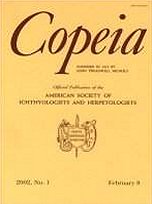In the previous two papers in this three-part series, we have examined visual pigments, ocular media transmission, and colors of the coral reef fish of Hawaii. This paper first details aspects of the light field and background colors at the microhabitat level on Hawaiian reefs and does so from the perspective and scale of fish living on the reef. Second, information from all three papers is combined in an attempt to examine trends in the visual ecology of reef inhabitants. Our goal is to begin to see fish the way they appear to other fish. Observations resulting from the combination of results in all three papers include the following. Yellow and blue colors on their own are strikingly well matched to backgrounds on the reef such as coral and bodies of horizontally viewed water. These colors, therefore, depending on context, may be important in camouflage as well as conspicuousness. The spectral characteristics of fish colors are correlated to the known spectral sensitivities in reef fish single cones and are tuned for maximum signal reliability when viewed against known backgrounds. The optimal positions of spectral sensitivity in a modeled dichromatic visual system are generally close to the sensitivities known for reef fish. Models also predict that both UV-sensitive and red-sensitive cone types are advantageous for a variety of tasks. UV-sensitive cones are known in some reef fish, red-sensitive cones have yet to be found. Labroid colors, which appear green or blue to us, may be matched to the far-red component of chlorophyll reflectance for camouflage. Red cave/hole dwelling reef fish are relatively poorly matched to the background they are often viewed against but this may be visually irrelevant. The model predicts that the task of distinguishing green algae from coral is optimized with a relatively long wavelength visual pigment pair. Herbivorous grazers whose visual pigments are known possess the longest sensitivities so far found. “Labroid complex colors” are highly contrasting complementary colors close up but combine, because of the spatial addition, which results from low visual resolution, at distance, to match background water colors remarkably well. Therefore, they are effective for simultaneous communication and camouflage.
How to translate text using browser tools
1 September 2003
Visual Biology of Hawaiian Coral Reef Fishes. III. Environmental Light and an Integrated Approach to the Ecology of Reef Fish Vision
N. J. Marshall,
K. Jennings,
W. N. McFarland,
E. R. Loew,
G. S. Losey
ACCESS THE FULL ARTICLE

Copeia
Vol. 2003 • No. 3
September 2003
Vol. 2003 • No. 3
September 2003




